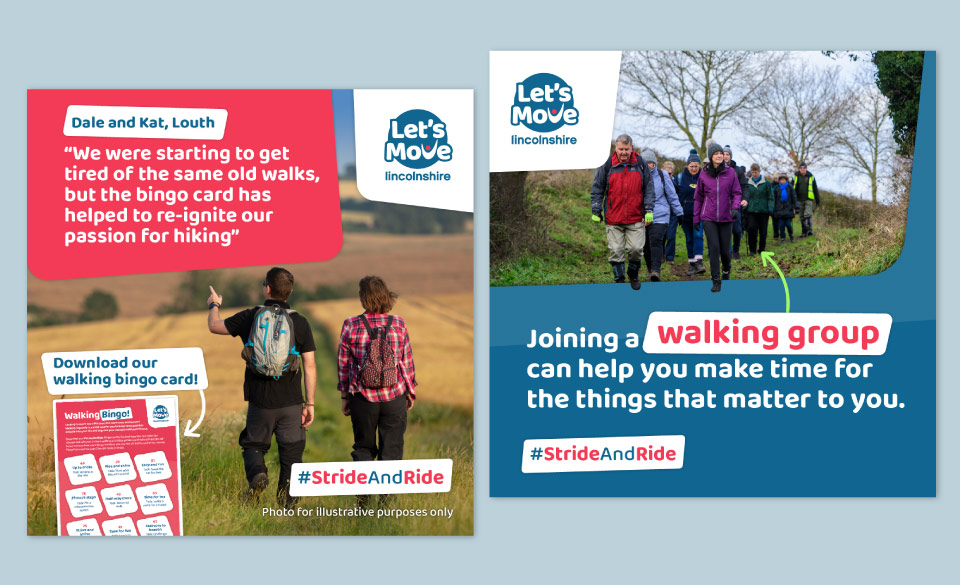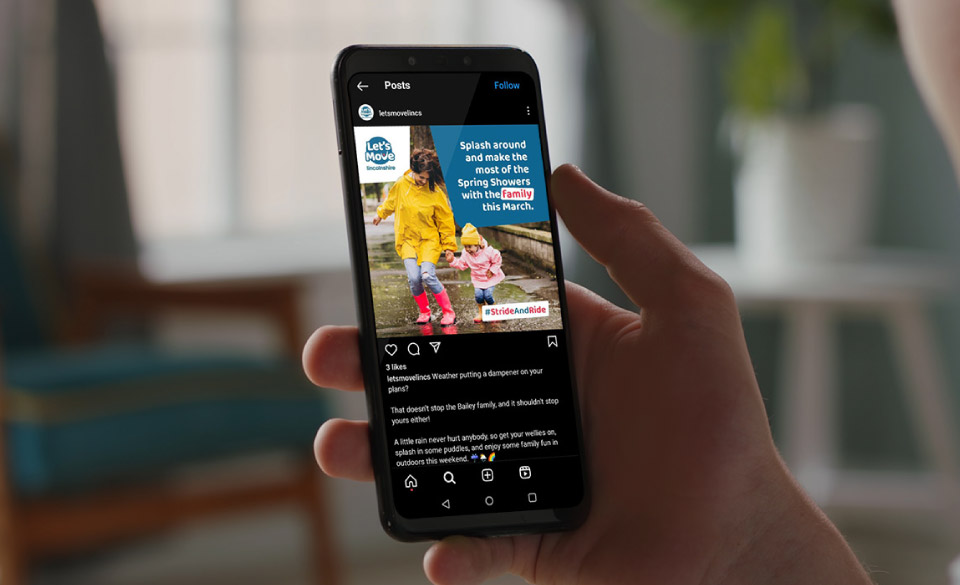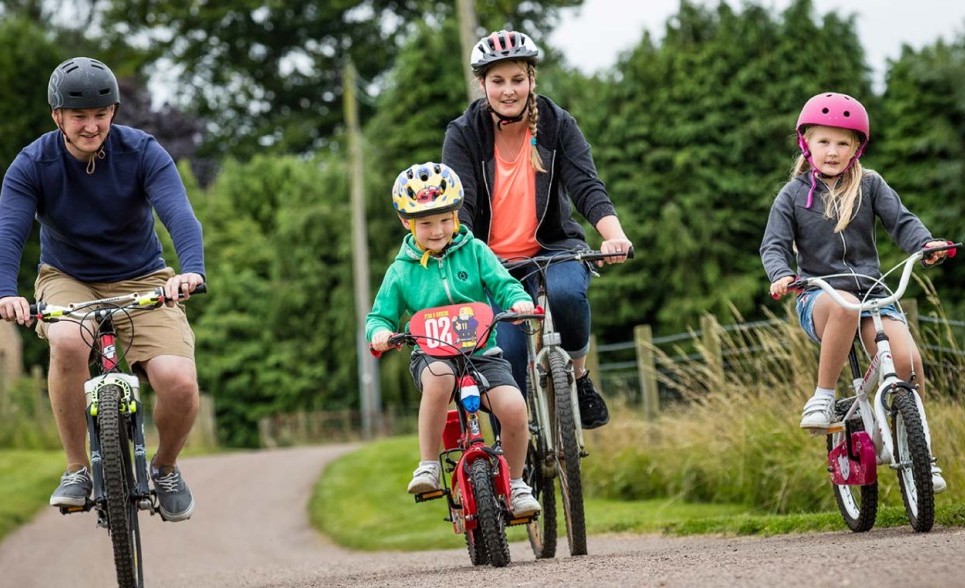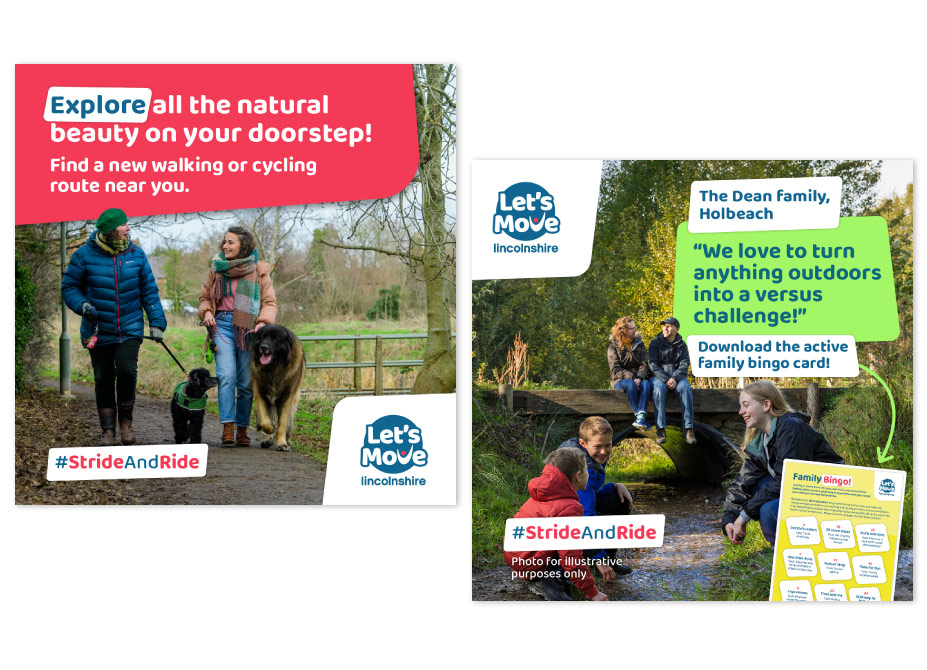
The mission.
Inspiring physical activity adoption using behavioural theory
With the cost-of-living crisis having a huge impact on people’s ability to participate in paid for activities or clubs, walking and cycling offers a cost-effective way to stay active and also support their mental wellbeing.
In order to encourage residents in Lincolnshire to become and stay more active through walking and cycling more, we created #StrideandRide, a 12-week creative campaign embedding behavioural theory and ‘nudge’ techniques to encourage and inspire people to reflect on their current physical activity levels, and how they could incorporate walking and cycling into their daily routine. Specifically, we focused on residents who were inactive, from lower socio-economic backgrounds, older adults, minority groups and families.
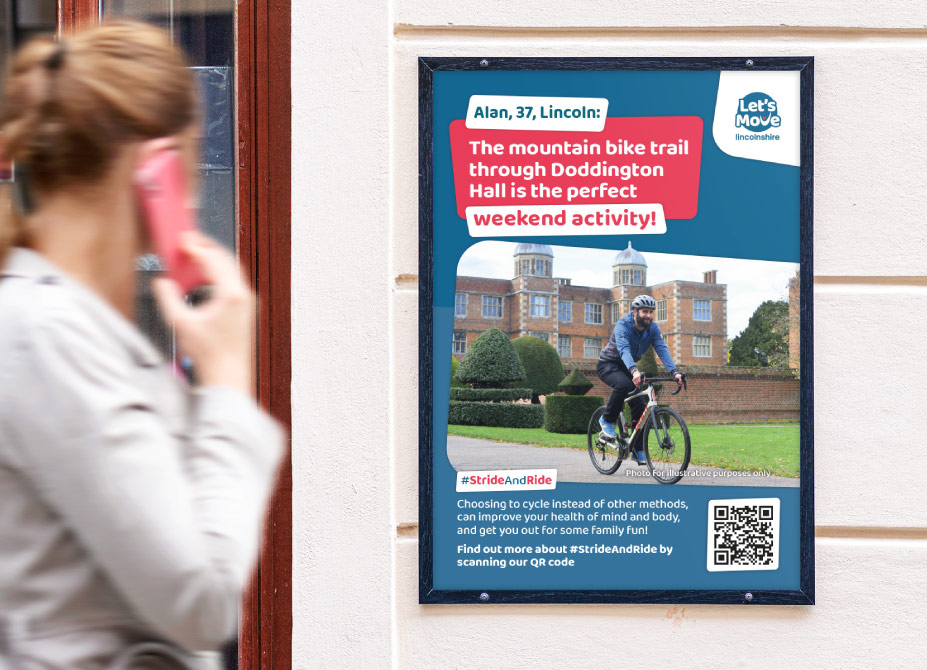
The research.
Research review and recommendations.
Using open source and local data available, our specialist Behavioural Insights team established four key themes to support the campaign direction and strategy, which included; focusing on family and friends, giving the mind and body a boost, applying habit adoption and default behaviour and using adventure as inspiration. Applying the COM-B model allowed us to address each of these strands by focusing on specific capabilities, opportunities and motivations to becoming more active, which would appeal to each of our key target audiences.
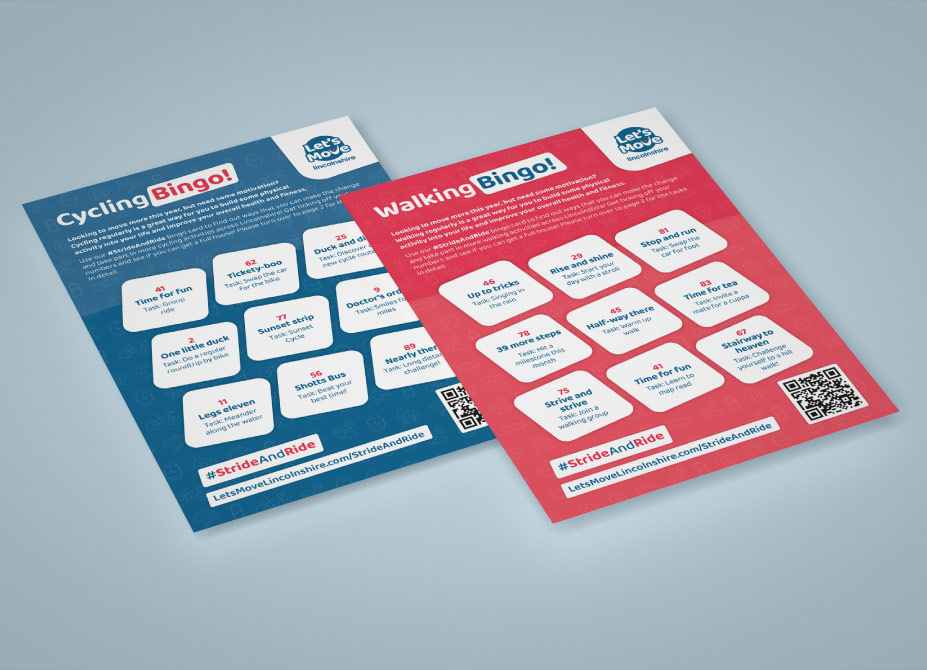
The campaign.
#StrideAndRide
We created a series of social media adverts and organic posts for use on the Let’s Move Lincolnshire social media channels, and began to develop connections with key stakeholders to support countywide sharing of the campaign, in order to maximise impact. We also created bespoke bingo cards, whereby new walkers/cyclists could "tick off" activities as they completed them, to help incentivise and gamify being physically active. We further organised an outdoor campaign using local publications, digital media, and iVans which were situated in coastal towns or areas of low physical activity uptake during the Easter weekend - a peak time for footfall.
The impact.
Even though we won't see a direct impact on activity levels due to the data not being available until 2024, the campaign showed excellent engagement and resident involvement across the 3-month period. Particularly promising outcomes came from our advertising work, with an encouraging dwell time on news articles and advertorials, suggesting people were keen to read and engage with the copy. Also, our social media advertising had great reach -as social media advertising often does-but interestingly and encouragingly, the engagement levels were also very high - 7.5k-8k engagement and link clicks, which brought in a very healthy £0.36 cost per click (CPC).
